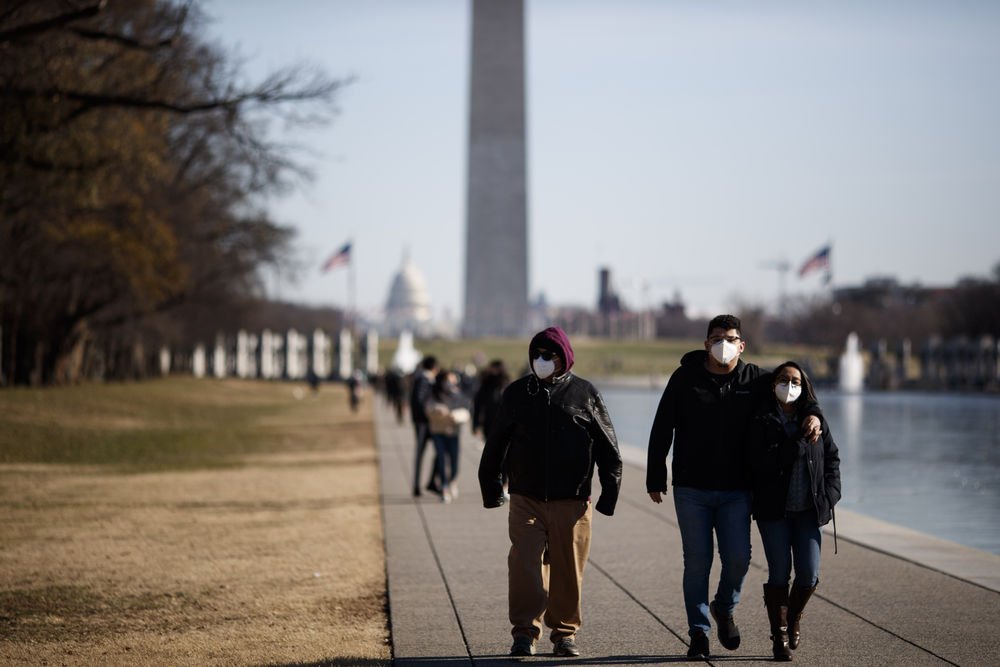People strolled on the National Mall in Washington, D.C. on December 27. The latest statistics on the coronavirus epidemic released by Johns Hopkins University on the 27th show that the cumulative number of confirmed cases in the United States exceeds 19 million.
Washington, December 27 According to the statistics of the American epidemic tracking project launched by Atlantic Monthly, as of the 27th, the number of new coronavirus deaths in the United States in December was nearly 65,000, the highest number of new deaths in a single month since the outbreak.
The data also shows that there are currently nearly 119,000 coronavirus hospitalizations in the United States, which has been on the rise recently.
According to the epidemic statistics released by Johns Hopkins University in the United States, as of the 27th, the cumulative number of confirmed cases and deaths in the United States exceeded 191.3 million, which is still the country with the largest number of confirmed and cumulative deaths in the world.
The New York Times reported on the 27th that relevant epidemic data show that since the outbreak of the epidemic, at least one in 17 people in the United States has been infected with the novel coronavirus and one in every 1,000 people have died of the novel coronavirus.
With the arrival of the holiday season in the United States, the Centers for Disease Control and Prevention recently issued a recommendation calling on people to stay at home as much as possible during the holiday, gathering with family and friends who are not together on the Internet, and emphasizing that travel increases the risk of infection and transmission of the novel coronavirus.
However, there are still a large number of American people traveling on holidays. The AAA expects 81 million people to drive around the United States between December 23 and January 3, 2021.
U.S. public health experts say the U.S. outbreak statistics may be backlogged and lagging during Christmas and New Year, and the epidemic situation is expected to “add to worse” after the holiday season.
Anthony Fauci, director of the National Institute of Allergy and Infectious Diseases and a member of the White House Coronavirus Response Task Force, said on the 27th that after Christmas and New Year’s holidays, it is likely to appear that there will be a wave of peaks on top of existing cases. The U.S. pandemic has not yet ushered in the “darkest” moment, and the situation may worsen in the coming weeks.



